ThyssenKrupp Steel AG

The way of the iron ore to finished product steel is an incredibly interesting story.
Only a few have an idea of what exactly happens in this way, while we are surrounded every day with products from this production cycle.
At ThyssenKrupp Steel AG is managed from development through to production and sales from a single source.
In recent years has ThyssenKrupp a lot of money invested in environmental protection to reduce emissions drastically.
After extensive restructuring and modernization of procedures ThyssenKrupp is on a very modern technical stand in order to meet future requirements already today.
Those who are interested, can below to learn more!

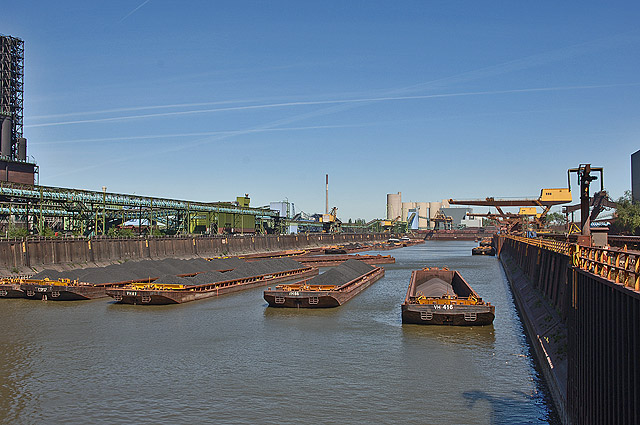

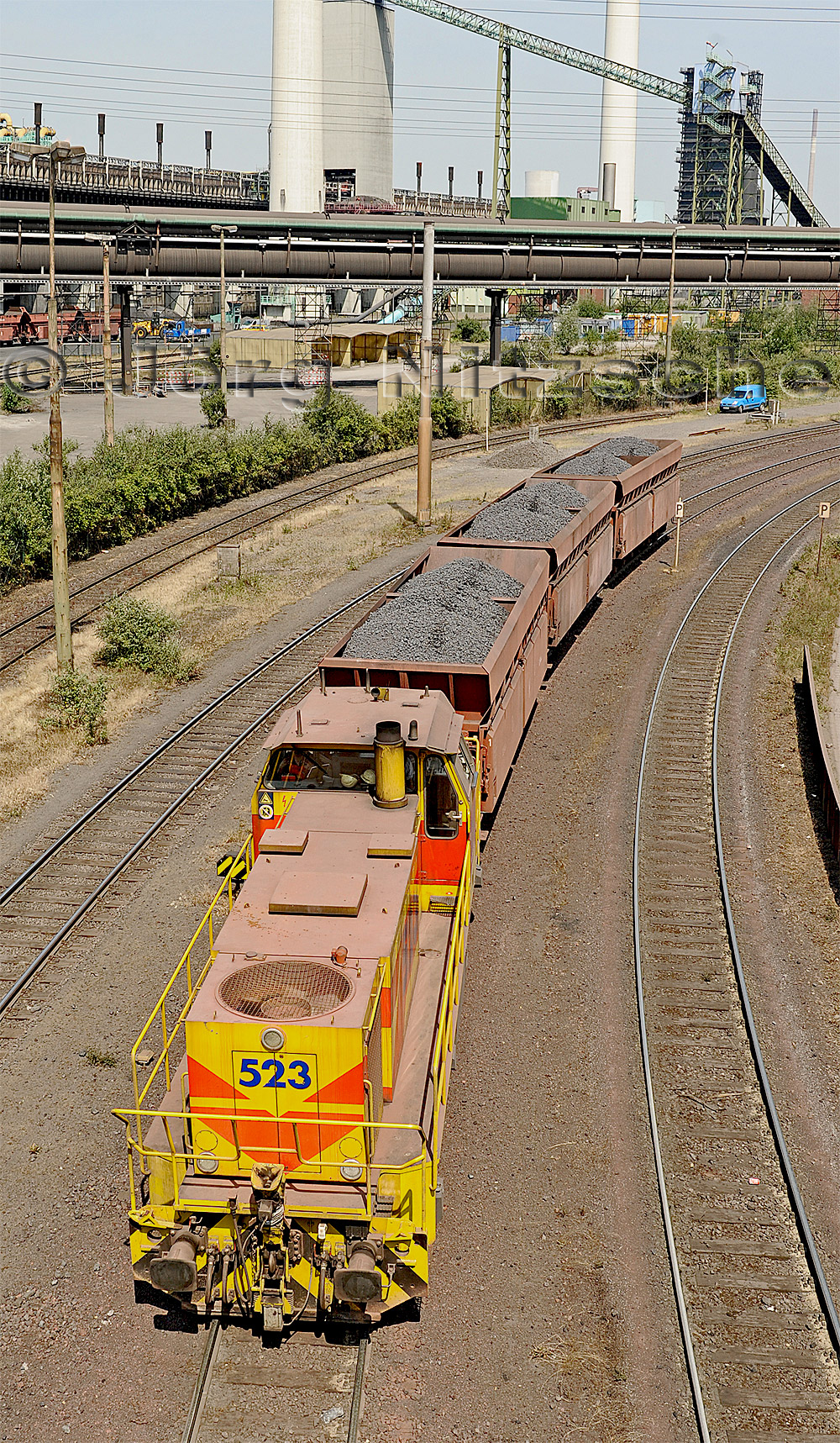

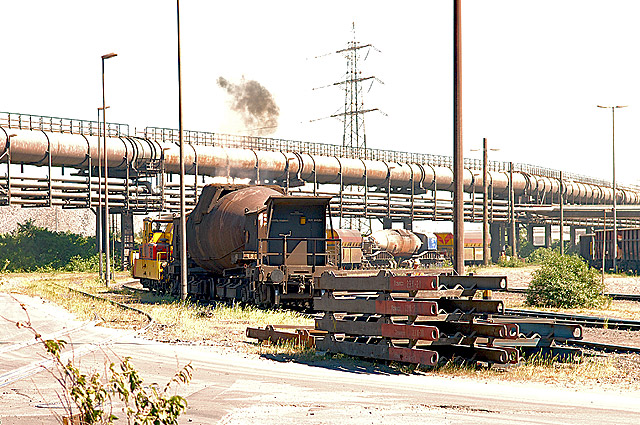



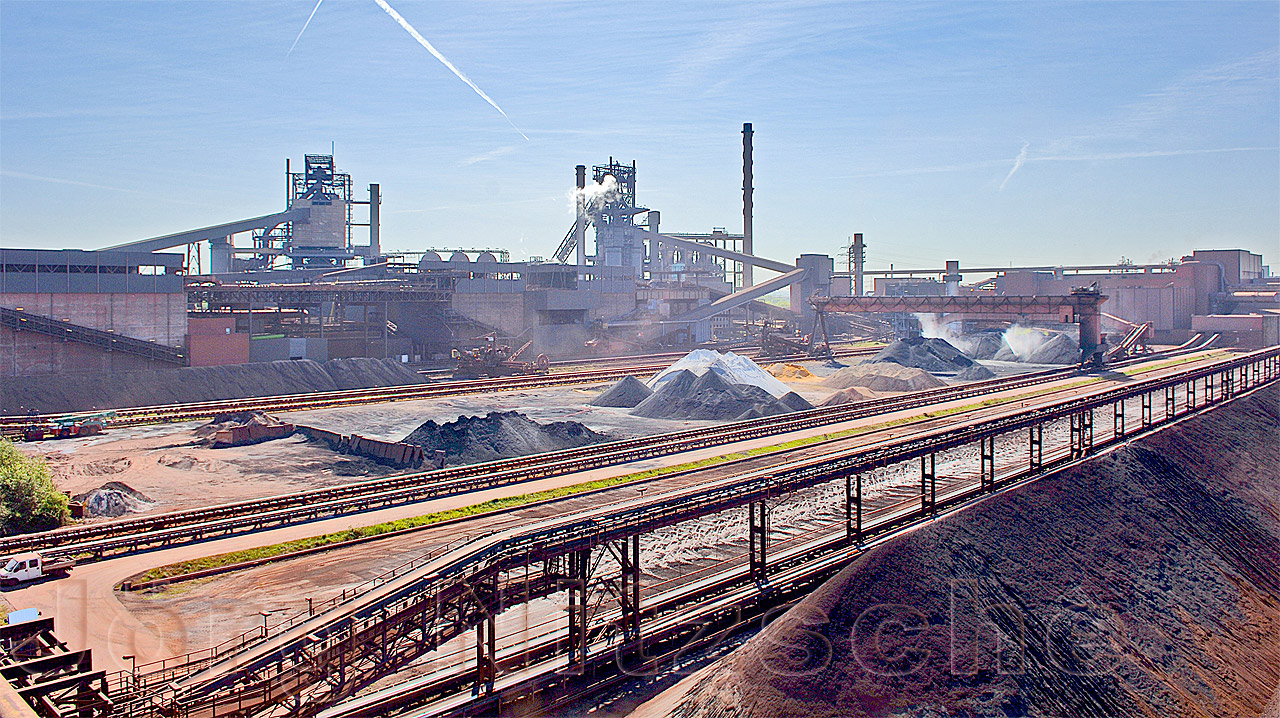











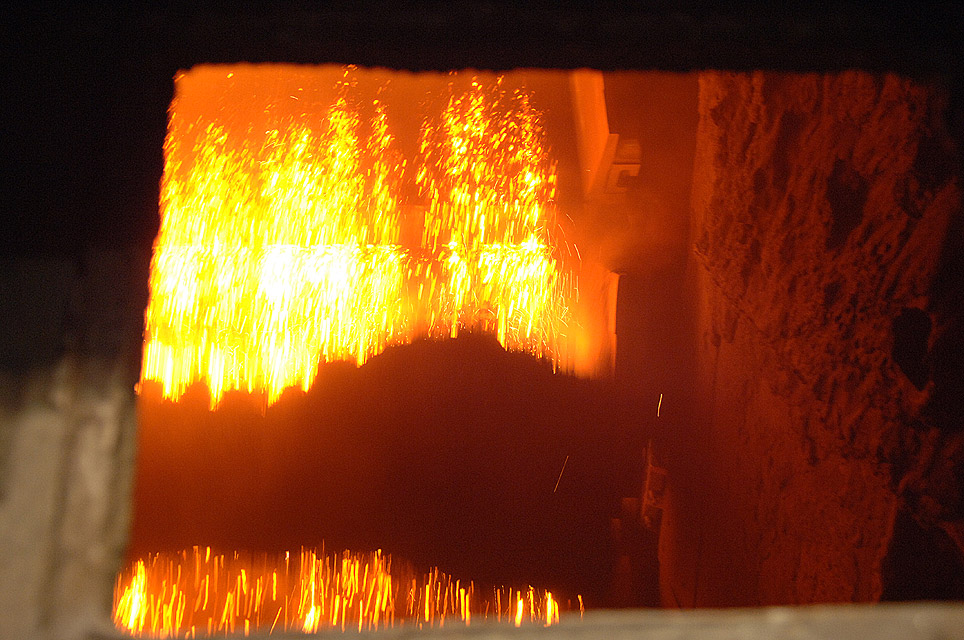





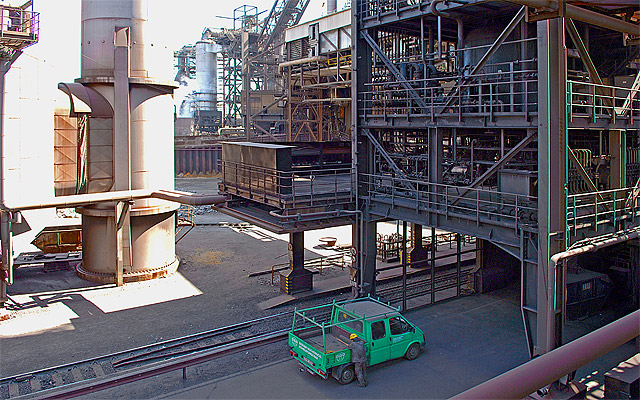

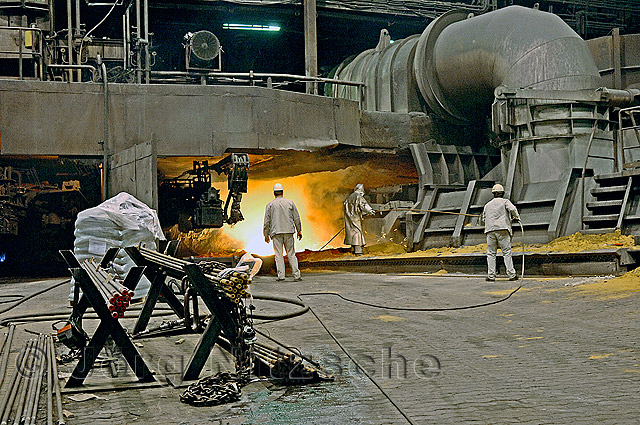












Iron ore is the natural raw material of the steel industry, and is primarily sourced from overseas in the form of ore fines,
lump ore and pellets. Coking coal for coking Schwelgern come from Germany, but mostly from Australia, Canada and the USA.
From Rotterdam everything up the Rhine barges for Schwelgern harbor (picture 1 + 2) is transported, or about the railway and ports GmbH on other transport routes.
Daily streams: 50,000 t iron carriers, 15,000 tonnes of coking coal and coal dust, 5,000 tons of coke from external suppliers and 6,000 t of aggregates.
The raw materials are mixed to six beds (picture 3 + 4) with 140,000 t capacity homogenized into a uniform mixture for use in the sinter plant.
Goal is the demand in quantity and quality of input material the sinter plant and blast furnace operations guarantee.
In the sinter plant fine ores and concentrates are made for use in the blast furnace into suitable, coarse-grained form,
or lumps (agglomerated) made so sintered. Sintering is carried on long endless belts (image 10 + 11),
where the fine-grained iron-containing material is melted and caked superficially together with aggregates and fuels.
After dropping the sintered cake (image 12 + 13) a pre-cutting by a spiked roller and a first screening of fines (Heißabsiebung).
To maintain the physical properties subsequently a gentle cooling to temperatures up to 80 ° C and a further crushing and sieving to produce the required for the blast furnace process grain belt.
The final sintering is now suitable because of its high gas permeability and its good reducibility for direct use in the blast furnace,
where it is reduced together with other components Möller (lump, pellets, aggregates, coke) and smelted to pig iron.
This sintering process is necessary because fine ores and concentrates may not be used in blast furnaces because of their high bulk density and poor gas permeability in the original state.
Environmental protection is a high priority in the sinter plant. Dusty process gases and air are i.a. in electrostatic precipitators (Picture 7 + 8),
whereby the deposited there dusts on resources supplied to the sintering process again. The production volume is approximately 33,000 tonnes of finished Inter per day.
Cast iron is the principal end product of the blast furnace process, and is formed by reduction of oxidic iron ore.
ThyssenKrupp Steel operates two blast furnace operations, Hamborn with an annual production of 10,500 tons of pig iron / day and Schwelgern
with a production of 21,500 t of pig iron / day. In the blast furnace eisenoxydhaltige ores are reduced to metallic iron and melted.
The starting materials of the blast furnace are coke and Möller. That the blast furnace process resulting blast furnace gas (blast furnace gas)
is used to process bottom of the coke ovens in the coking plant and the rolling mill furnaces for heating and power plants to generate electricity.
In the lower part of the blast furnace is blown through blow hot air. In order to optimize the process and to minimize the cost of powdery carbon
is injected as a carbon support and a coke substitute via the tuyeres. However, the operation of a blast furnace without coke is not possible.
The coke reserves in the zone of the blast furnace in which soften and melt the ore, its solid structure in.
It therefore secures the permeability of the bulk material for the rising reducing gas and simultaneously serves as a scaffold.
The present in this area carbon gasified with the oxygen of the hot blast to reducing gas (carbon monoxide) at temperatures of up to 2,200 ° C.
In iron dissolve small amounts of carbon, whereby the melting temperature of the pig iron is lowered.
The accompanying elements of the feedstocks form a liquid slag.
Pig iron and slag are collected in the lower region of the blast furnace (frame) and are removed via an openable needle hole.
The tapping of the pig iron is about 1480-1500 ° C. in the separator are pig iron and slag separately (image 21 + 22).
The pig iron (about 94% iron, 4.7% carbon, 0.4% silicon, 0.2% manganese, 0.04% sulfur) is in the liquid state in refractory torpedo ladles
(image 23 + 24 + 25) to Oxygen steelworks Bruckhausen and Beeckerwerth transported and processed into steel.
The furnace campaign, thus the period until the refractory lining of the blast furnace must be completely renewed is today 15 to 20 years, he has been in continuous operation.
In fully dusted Roheisenumfüllgruben the liquid pig iron is transferred directly into the Chargierpfannen.
The sulfur content of the pig iron is reduced accordingly by injection of calcium carbide,
magnesium and lime according to the to be produced steel quality (image 28).
In a converter (image 26 + 27), the pig iron is converted to crude steel for a developed at ThyssenKrupp
combined blowing method (TBM) by blowing oxygen and bottom blowing argon / nitrogen. It is added to about 15% scrap.
Immediately after Stahlabstich the steel is homogenized in the casting ladle by purging with argon.
In the secondary metallurgical facilities of the molten steel is targeted En ../ images / tkohlen and / or brought to the required alloying analysis and set the desired casting temperature.
In the continuous casting of the finished liquid steel is continuously cast (image 34).
At the outlet of the casting plant, the strand into individual bars, so-called "slabs" (21.5 - 25.5 cm thick, 1.18 - 2.6m wide and 6-12m long).
Split (image 35).
Finally, the slabs are clearly identified and measured before they are delivered over the slab yard of the customer (image 36) .
In both steel mills t crude steel are produced per day 30,000, of which 25,000 t in the form of slabs.
In the field of cast iron and steel slag produced during the production process, which are used as high-quality material for fertilizer or in road and water:
granulated blast furnace slag
In the pig iron production falls as a further product of blast furnace slag.
At the blast furnaces Hamborn 9, Schwelgern 1 and 2 are called Granulationseinrichtungen available where blast furnace slag is granulated through targeted,
rapid cooling with water to form a glassy sand. The blast furnace slag produced is sold mainly for cement production at the cement industry.
The annual sales volume is about 2.5 million tonnes.
Blast furnace lump slag
Slow cooling in slag beds crystalline blast furnace lump slag produced. This natural stone-like product is used for road construction. Each year about 600,000 tons sold.
Steelmaking slag
In the steelworks slag (image 29 + 30) is a obtained at from the production of crude steel product,
which is obtained and liquid is poured into slag beds. These waste products are specially treated, depending on their intended use.
